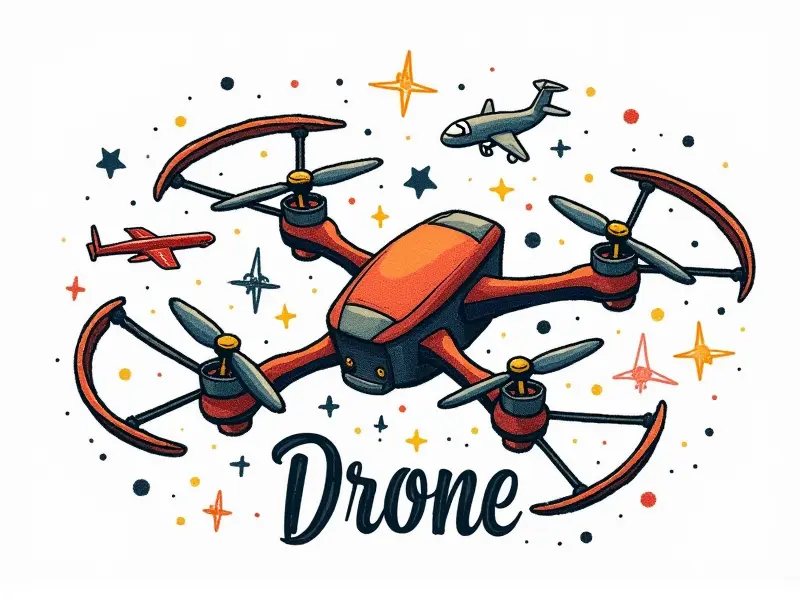Can RC planes fly upside down?

Can RC Planes Perform Aerial Tricks?
The world of remote-controlled (RC) planes is a fascinating one, where enthusiasts push the boundaries of what these miniature aircraft can do. One of the most impressive feats in this realm is performing aerial tricks, such as loops, rolls, and inverted flight. But can RC planes truly fly upside down? Let's dive into the capabilities and techniques that make it possible.
Techniques for RC Plane Aerial Acrobatics
To perform aerial acrobatics with an RC plane, pilots must master several key techniques:
- Balanced Flight: Ensuring the plane is stable and responsive in all flight modes.
- Roll Control: Using ailerons to initiate rolls smoothly and precisely.
- Pitch Adjustment: Controlling elevator movements for accurate altitude changes.
Mastery of these techniques allows pilots to execute complex maneuvers with precision and grace, transforming simple flight into an art form.
Secrets of Flying RC Planes Backwards
Flying an RC plane backwards is a challenging but rewarding skill. The key lies in:
- Throttle Management: Adjusting the throttle to maintain speed and control during reverse flight.
- Precision Control: Using rudder and elevator for fine-tuned directional changes.
This technique requires a deep understanding of aerodynamics and careful practice to perfect.
Mastering Inverted Flight with RC Planes
Inverted flight is one of the most thrilling maneuvers in RC aviation. To achieve this:
- Aileron Control: Using ailerons to maintain balance during inverted flight.
- Elevator Compensation: Adjusting elevator movements to counteract gravity and maintain altitude.
Mastery of these controls ensures smooth, stable inverted flight that wows spectators and challenges pilots alike.
Exploring Extreme RC Plane Maneuvers
The realm of extreme maneuvers includes:
- Aileron Rolls: A rapid rotation around the longitudinal axis.
- Loop-the-Loops: A complete 360-degree vertical circle.
- Barrel Rolls: A combination of a loop and roll, creating an elegant spiral motion.
Each maneuver requires precise control and understanding of aerodynamics to execute flawlessly.
How to Fly RC Planes Sideways and Backwards
Flying sideways and backwards demands:
- Rudder Control: Using the rudder for directional changes in all flight modes.
- Aileron Coordination: Coordinating ailerons with elevator movements for smooth transitions.
This technique is essential for performing intricate maneuvers and maintaining control during complex flights.
Achieving Inverted Flight in RC Aviation
Inverted flight requires:
- Control Surface Adjustment: Fine-tuning ailerons, elevators, and rudder to maintain stability.
- Pilot Skill: Quick reflexes and precise control for maintaining balance during inverted flight.
Mastery of these skills allows pilots to perform impressive aerial tricks with confidence and poise.
Ultimate Guide to RC Plane Aileron Rolls
Aileron rolls are a staple of advanced RC flying. To execute them:
- Start Position: Begin from level flight, ensuring the plane is stable and balanced.
- Rapid Roll Initiation: Apply full aileron input to initiate the roll quickly and smoothly.
- Maintain Altitude: Use elevator adjustments to keep altitude constant throughout the maneuver.
This guide provides step-by-step instructions for mastering this classic aerial trick.
Secrets of RC Plane Loop-the-Loops
To perform a loop-the-loop:
- Throttle Boost: Increase throttle to gain enough speed and altitude for the maneuver.
- Precise Pitch Control: Use elevator to initiate and maintain a smooth vertical climb.
- Maintain Speed: Adjust throttle as needed to complete the loop without stalling or losing control.
This technique showcases the pilot's skill in maintaining precise control throughout an extreme maneuver.
Can RC Planes Pull Off Barrel Rolls?
Barrel rolls are a combination of aileron rolls and loops. To execute:
- Initiate Roll: Begin with a rapid roll to start the barrel roll.
- Maintain Altitude: Use elevator adjustments to keep altitude constant during the maneuver.
- Complete Loop: Finish the roll into a loop, creating an elegant spiral motion.
This complex maneuver requires precise control and understanding of aerodynamics for flawless execution.
RC Plane Piloting: Tricks and Tips
To excel in RC plane piloting, consider these tips:
- Practice Regularly: Consistent practice is key to mastering advanced maneuvers.
- Understand Aerodynamics: Knowledge of aerodynamic principles enhances control and precision.
- Use Quality Equipment: Invest in high-quality RC planes with responsive controls for better performance.
By following these guidelines, pilots can push the boundaries of what their RC planes can achieve, creating breathtaking aerial displays.
Conclusion
The world of remote-controlled aviation is a realm where imagination and skill converge to create awe-inspiring feats. From mastering inverted flight to executing complex maneuvers like barrel rolls, RC plane pilots have the tools and techniques to push the envelope of what these miniature aircraft can do. With dedication, practice, and an understanding of aerodynamics, any pilot can achieve mastery over their RC planes, transforming simple flight into a thrilling aerial art form.

